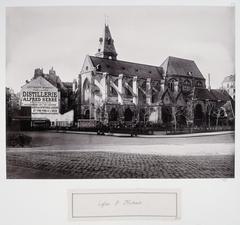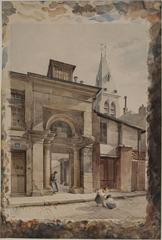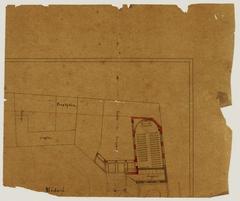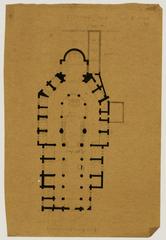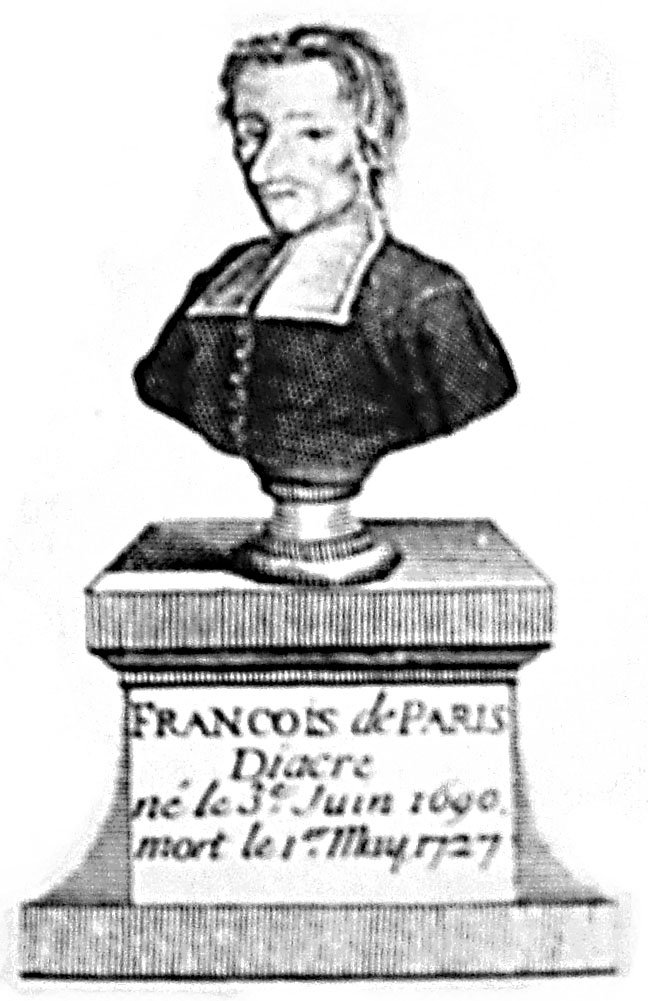
Église Saint-Médard Visiting Hours, Tickets, and Historical Sites in Paris
Date: 14/06/2025
Introduction: Discovering Église Saint-Médard
Église Saint-Médard, located in the heart of Paris’s historic 5th arrondissement on lively Rue Mouffetard, is a remarkable testament to the city’s religious, cultural, and architectural evolution. Its rich heritage spans centuries, blending flamboyant Gothic, Renaissance, and classical styles, and features an impressive collection of artworks, a rare wooden vault, and a historic pipe organ. As an active parish, Saint-Médard remains closely woven into the local community, serving both spiritual and cultural roles.
This comprehensive guide delivers everything you need to plan a memorable visit: from up-to-date information on Église Saint-Médard visiting hours and accessibility, to historical insights and top nearby attractions. Whether you’re an architecture enthusiast, history lover, or simply a curious traveler, Église Saint-Médard invites you to explore one of Paris’s lesser-known yet deeply significant historical sites. For current schedules and events, consult the Église Saint-Médard Official Website or the Paris Convention and Visitors Bureau.
Contents Overview
- Introduction
- Historical Overview
- Early Origins and Medieval Foundations
- Construction and Architectural Evolution
- Religious Turmoil and the Tumult of Saint-Médard
- The Jansenist and Convulsionnaire Movements
- Revolutionary and 19th-Century Changes
- Architectural and Artistic Highlights
- Exterior and Façade
- Nave, Vaulting, and Capitals
- Choir, Wooden Vault, and Chapels
- Stained Glass and Lighting
- Organ and Musical Heritage
- Visiting Information
- Hours, Admission, and Accessibility
- Directions and Travel Tips
- Guided Tours
- Nearby Attractions
- Cultural and Religious Significance
- Visitor Experience and Etiquette
- Restoration and Preservation Efforts
- FAQs
- Conclusion
Historical Overview
Early Origins and Medieval Foundations
The origins of Église Saint-Médard date back to the early Christian era, with archaeological finds such as Merovingian tombs attesting to the site’s sacred use as early as the 6th or 7th century (Wikipedia). Originally a village church along the Bièvre River, it stood near a Roman road connecting ancient Paris (Lutetia) to Lyon (Travelfranceonline). A chapel dedicated to Saint Medard, the 6th-century bishop of Noyon, is said to have existed here, though its destruction by Norman invaders in 887 is debated (Patrimoine-Histoire). By the 12th century, the church was formally established and attached to the Abbey of Sainte-Geneviève.
Construction and Architectural Evolution
Construction of the current structure began in the late 15th century, following the economic recovery after the Hundred Years’ War (Patrimoine-Histoire). The nave was built in the flamboyant Gothic style, distinguished by intricate vaulting. The choir, higher and wider than the nave, was begun in the late 16th century and completed in the mid-17th century. The 18th century brought classical redesigns, notably the axial chapel dedicated to the Virgin Mary (Wikipedia).
Religious Turmoil and the Tumult of Saint-Médard
Saint-Médard played a prominent role during the 16th-century religious conflicts. The “Tumult of Saint-Médard” in 1561 saw violent clashes between Catholics and Huguenots, setting a precedent for religious strife in Paris (Patrimoine-Histoire).
The Jansenist and Convulsionnaire Movements
In the 18th century, the church became a center for the Jansenist movement. Its cemetery attracted pilgrims to the tomb of François de Pâris, giving rise to the Convulsionnaire phenomenon, which was ultimately suppressed by authorities (Wikipedia).
Revolutionary and 19th-Century Changes
The French Revolution saw the church’s closure and subsequent use by the Theophilanthropes sect, before the 1801 Concordat restored it to Catholic worship (Patrimoine-Histoire). The 19th century brought urban development, with former cemetery grounds transformed into public spaces (Travelfranceonline).
Architectural and Artistic Highlights
Exterior and Façade
Located at 141 rue Mouffetard, the church’s façade reflects centuries of architectural evolution. Partially revealed after 19th-century urban changes, it features a sundial—a rare medieval element—and a classical narthex crowned with a bell tower. The contrast between the lower nave and taller choir highlights the gradual construction phases.
Nave, Vaulting, and Capitals
The 15th-century nave is a fine example of flamboyant Gothic architecture, with ribbed vaults and five carved keystones. Pointed arches rest on sturdy columns adorned with capitals featuring acanthus leaves, human heads, and intricate vegetal motifs, evidencing the building’s multi-era construction.
Choir, Unique Wooden Vault, and Chapels
The choir, constructed between 1550 and 1632, is wider and taller than the nave. Its unique wooden vault, installed in 1622 due to budget constraints, is a rarity in Parisian churches. The axial chapel (1784), dedicated to the Virgin, blends late Baroque and early Neoclassical styles. Several side chapels offer diverse artistic styles and devotional art.
Stained Glass and Lighting
Vibrant stained glass windows, some from the 16th and 17th centuries, fill the interior with colorful light and depict saints and biblical scenes (Monumentum).
Organ and Musical Heritage
The grand organ, with a 17th-century buffet and later enhancements, is classified as a historic monument and is still used for services and concerts (Art, culture et foi). The church also holds a unique collection of 19th-century acoustic demonstration instruments.
Visiting Information
Visiting Hours and Admission
- Monday to Saturday: 9:00 AM – 6:30 PM
- Sunday: 8:00 AM – 7:00 PM
- Closed on major public holidays
Entry is free for all visitors. Donations are welcome to support preservation.
Accessibility
The church is accessible to visitors with reduced mobility, with ramps at the main entrance and adapted restrooms. Assistance is available upon request.
Directions and Travel Tips
- Metro: Line 7 (Place Monge, Censier–Daubenton), Line 10 (Cardinal Lemoine)
- Bus: Lines 47, 67
- Walking: Easily reachable from the Latin Quarter and near Rue Mouffetard
For the quietest experience, visit on weekday mornings or late afternoons.
Guided Tours
Free and occasional guided tours are offered by local volunteers, especially during heritage days. For schedules, check the official parish website or the Paris Convention and Visitors Bureau.
Nearby Attractions
Enhance your visit by exploring these nearby sites:
- Rue Mouffetard Market: One of Paris’s oldest street markets, bustling with food stalls and cafés.
- Jardin des Plantes: A renowned botanical garden and zoo.
- Arènes de Lutèce: Remains of an ancient Roman amphitheater.
- Panthéon: Neoclassical mausoleum and national monument.
Cultural and Religious Significance
Église Saint-Médard is dedicated to Saint Médard, a 6th-century bishop known for compassion and miracles. The church celebrates his feast day on June 8, continuing a tradition of service and charity. As an active parish, it hosts regular Masses, sacraments, and community events, blending faith with cultural engagement (Art, culture et foi). The church’s artistic patrimony includes paintings by Zurbarán and Philippe de Champaigne, ornate 17th-century choir ensembles, and numerous stained glass windows (Monumentum).
Visitor Experience and Etiquette
- Politeness: Greet parish staff and parishioners quietly.
- Dress Code: Modest attire (shoulders and knees covered).
- Silence: Maintain a respectful atmosphere, especially during services.
- Photography: Permitted only where signs allow; avoid flash and disruptions.
- Participation: All are welcome to attend Mass as observers; communion reserved for Catholics.
Restoration and Preservation Efforts
Classified as a Monument Historique since 1906, Église Saint-Médard has benefited from ongoing restoration, including recognized efforts on the Stations of the Cross and the unique wooden vault (Patrimoine-Histoire). Preservation ensures the church remains a living monument for future generations.
Frequently Asked Questions (FAQ)
Q: What are the visiting hours of Église Saint-Médard?
A: Monday to Saturday 9:00 AM–6:30 PM; Sunday 8:00 AM–7:00 PM.
Q: Is there an entrance fee?
A: No, entry is free. Donations are appreciated.
Q: Are guided tours available?
A: Yes, occasionally. Check the parish website or Paris tourism listings.
Q: Is the church accessible?
A: Yes, with ramps and adapted restrooms.
Q: Can non-Catholics attend Mass?
A: Yes, all are welcome as observers.
Conclusion
Église Saint-Médard is a vibrant cultural and spiritual hub that embodies the layered history of Paris. With its rare architectural features, historic organs, and welcoming community, the church offers an enriching and tranquil experience for all visitors. Plan your visit to immerse yourself in the history, art, and community spirit of this Latin Quarter treasure. For the latest updates, consult official resources and consider downloading the Audiala app for curated tours and insights.
Sources
- Wikipedia
- Église Saint-Médard Official Website
- Art, culture et foi
- Patrimoine-Histoire
- France-Voyage
- Cityzeum
- Paris Convention and Visitors Bureau
- Monumentum
- Lonely Planet Paris Guide

